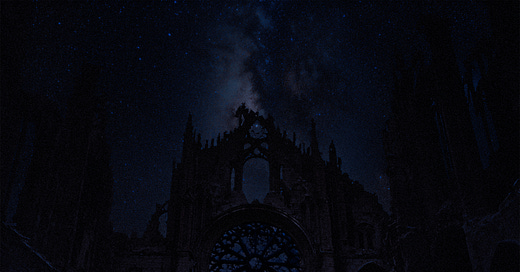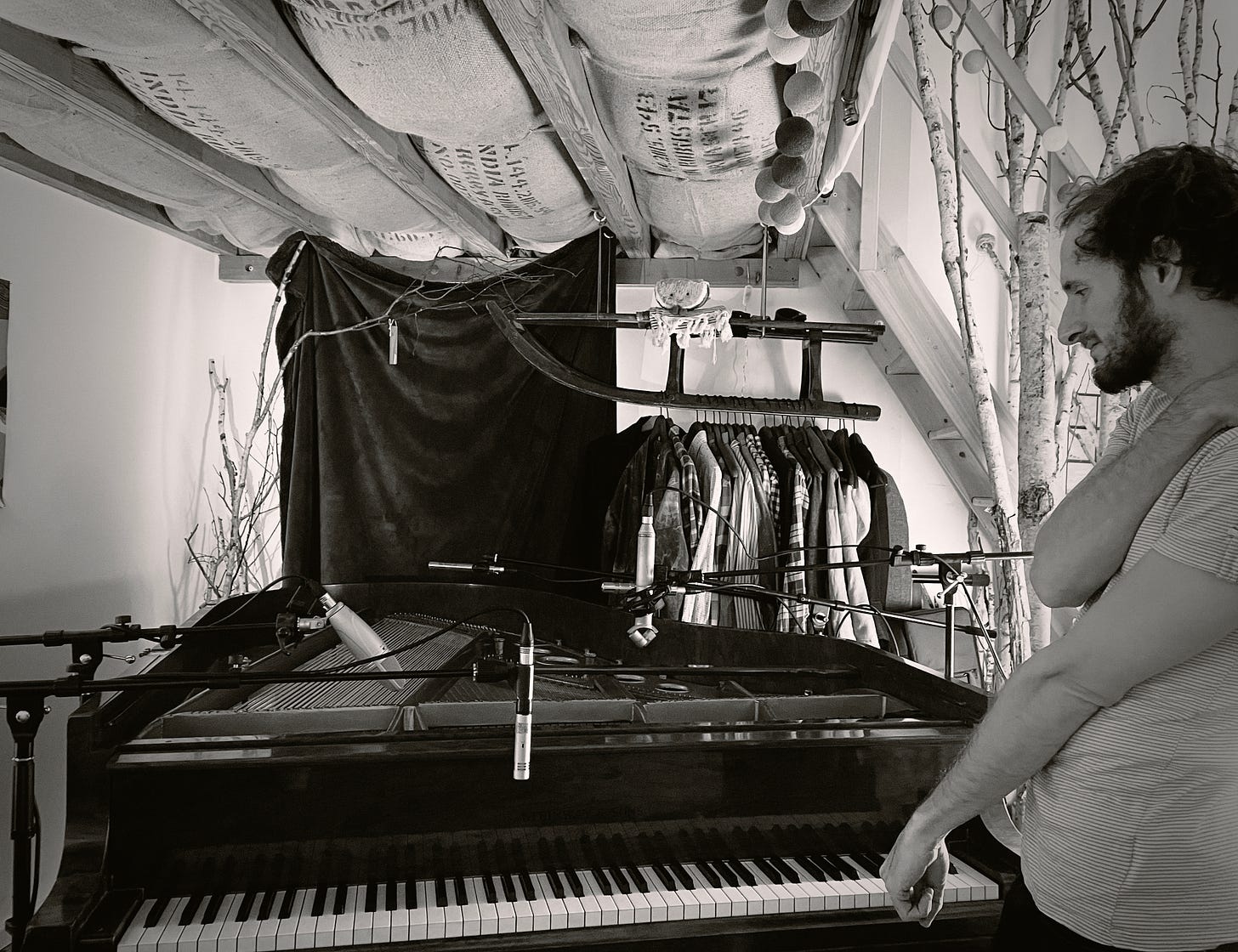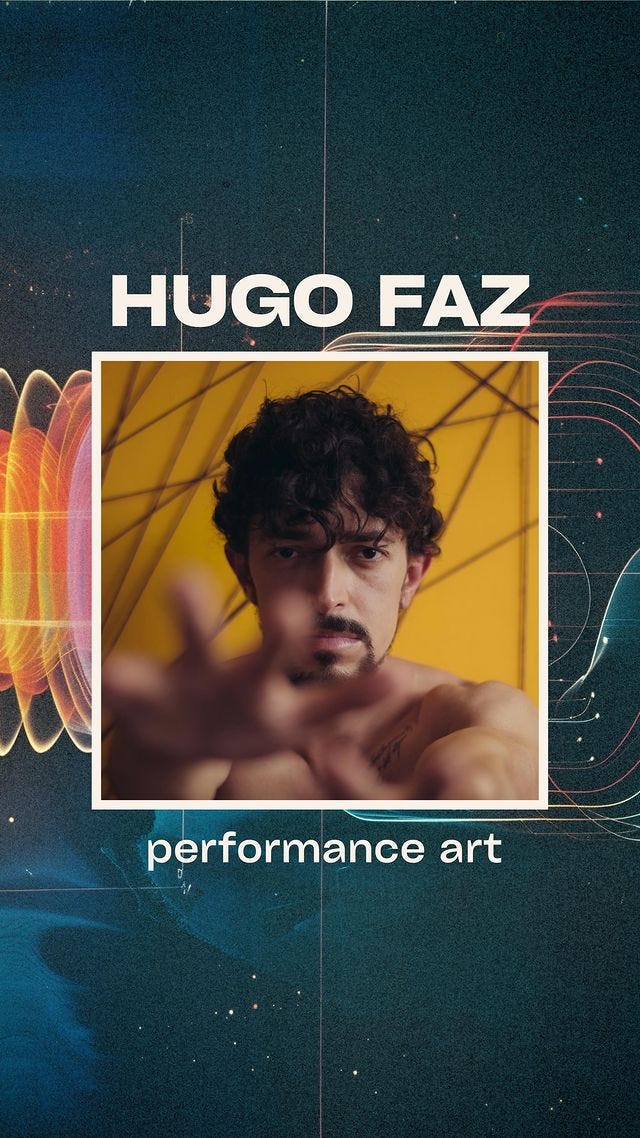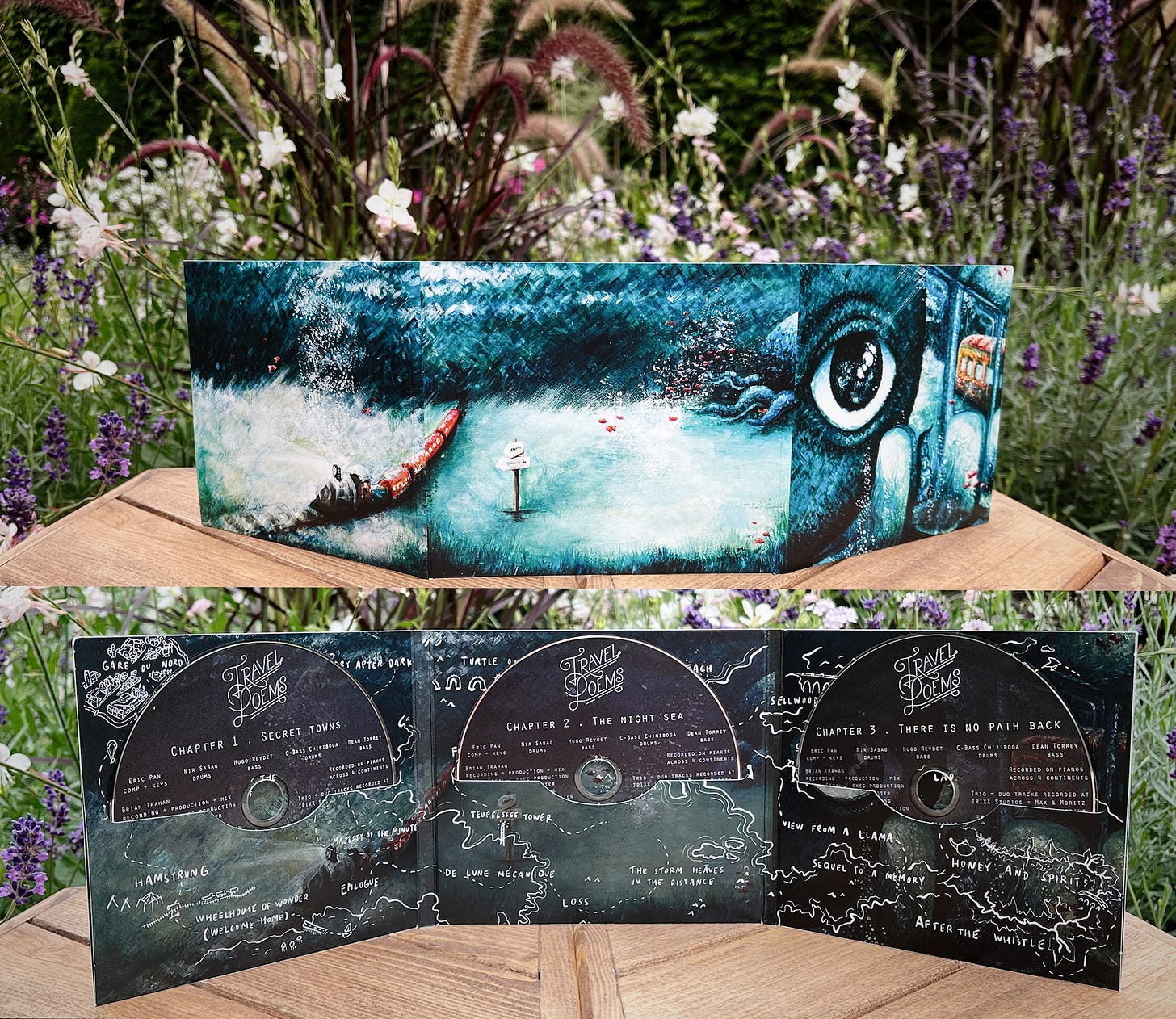You awaken to a view of the Milky Way framed by crumbled stone walls.
The night air is warm, but your makeshift straw bed got colder and more damp since bedtime.
[ Look along the sky’s edges for a blush of dawn ] —
Parapets and pinnacles loom from all directions, at once cordial and unwavering: a gothic intervention, perhaps. Though the roof and bell tower collapsed long ago, it’s a wonder how the rose window and a few buttresses stand defiant. The unending stories that must be embedded in this rubble . . . the commissioning queen, the architects and townsfolk, the hands of how many stonemasons —
— suddenly you notice a slight change in light, nearby.
Eyes adjusted to your starlit surroundings, you fix your gaze on the source of the flicker. Behind half-collapsed walls glows a mystery, faintly.
[ Clamber across various ruins, to investigate the light-source ] —
In olden times, along clean-swept floor tiles, it’d be fifty paces to your destination. Now, however, none of the ground is accessible, and you’re forced to negotiate cathedral debris fallen earthward. Some stone chunks are large as a horse.
You move gingerly, taking care to not stumble or step into a gap large enough to swallow an ankle. Instinct tells you to make zero noise too, to surface suspicious sounds, and conceal your proximity in case there’s company.
Could there be a person here? Creatures visiting . . . or burrowed? Are you trespassing on hostile territory, guarded fiercely by someone — or something?
Ten paces now.
You consider possible paths, stepping forward where it makes sense. Now and again, you glance over to the emanating light: it doesn’t change but, trick of the mind or not, seems to grow more steady the closer you approach.
Up this close, the glow reveals its subtle iridescence: both yellow-orange and purple.
Shimmying up to the corner where you first spotted the light’s appearance sixteen minutes ago, you feel a tinge of nervousness. You steel yourself against danger, readying your body and wits for an immediate retreat: back to this side of the wall, even bolting for the previous room exactly like lightning, if need be.
Ever so slowly, you peek around the bend.
Atop a pile of rocks, one large gemstone sits, cleaved open after a long fall, its two halves emitting a marvelous radiance of unknown origins.
// Side B //
. . . thank you for tuning in today. That was two songs from the top o’ the hour — first you heard “The Cosmic Blink Expands” off Lullabies of the Pleiades, and then an 18-minute improvised exploration from the morning of July 8th. Together they assemble a passe-partout of peaceful mystery to score today’s written adventure.
Lullabies originated November 2020, as a commission by Keith Zarriello in collaboration with Sonder House. Keith found me wandering SubmitHub trying to wrap my head around how to promote my first-ever single released (audio+video // story+press) — and asked if I’d be interested in writing and recording some neoclassical piano music.
Would I indeed! I was intrigued by the idea’s creative freedom + creative constraint.
I embarked on the journey of writing a dozen songs with a few dabs of improvisation, selecting six of the most tranquil, recording them from lockdown with the help of Brian Trahan’s attentive microphone erudition. We both got sick from covid anyway.
We mixed the EP in Brian’s old studio with me “driving from the sidecar” —
— then Alex Saltz mastered the record, and the astounding Juliette Viger painted the covers: 1 for each single as they rolled out, 1 for Lullabies of the Pleiades collected entire.
It’s been fun to witness this side project become my most widely-streamed work so far. Listen now on this bandcamp player (or choose your music service here) — and purchase it if you’d like to support my work!
The Street of Birds
Hello to all songwriters out there! I haven’t talked lyrics much, ever, since I’m new here. So . . . *kicking around dirt* . . . let’s powwow! If I’m like an overeager parent jumping on every opportunity to mingle with all my kid’s friends first day of school, I can wait ’til tomorrow.
“Rue des Oiseaux” is my favorite track from Josephine Pia Wild’s debut EP, Multiple. Half the time when I listen to it I end up crying, from the poignancy of the lyrics meeting the swell of Josephine’s voice. Here’s the released song:
. . . and here are our notes, from working on the English lyrics together. Similar to collaborating on Dernière Nuit, the process of transformation from the original French was simultaneously restrictive and liberating. Final lyrics on the left, under a working syllable sketch — not unlike dolly tracks for a camera — and brainstormed snippets on the right, mostly ending up scattered about the cutting room floor:
[📮 Update 28 Aug: Josephine has posted the astounding story of how the French lyrics came to being — a story of cosmic abundance connected to the birth of her cousin’s baby — which you can read on instagram or her patreon which includes an early recording of the song.]
I love how these dual-language songs don’t reveal their English parts until late, well past the chorus. The resulting effect for me is they then arrive in a starburst of clarity, made potent by the poetry’s density, each word vital.
What are your experiences writing lyrics and interweaving them with music?
(By the way, if Substack doesn’t let you comment on this post without upgrading your subscription, feel free to reply to this email, message me, or “@” me in a Substack Note — pasting in the URL of this post helps but is optional.)
and now, for something completely different . . .
I’m over the moon in anticipation of exhibiting with these two artists I’ve long admired 🫠:
Hugo Faz, whose work in performance, nude, and queer art relentlessly pushes boundaries while carrying a heart of golden virtue every impassioned step. Here’s the intro video they made for their TAIMOM artist takeover last week (which also included short film, dance, a photography series . . . ) —
Magdalena Paz, painter and sculptor who melds her artistic practices with her athleticism. She’s posting through The Air Is Made Of Music’s account this week, showcasing her background, inspirations, and studio snippets so far:
I resonate with both these artists so personally: with Magda, through my childhood marked by the constant disruption of moving again and again; with Hugo, through deep reflections on masculinity, and cultural perceptions towards those who present as male.
Follow along on insta for exhibition news or, better yet — sign up for the TAIMOM mailing list — this exhibition will be ongoing, all the way through Berlin’s 1st group show + concert series Oct 2–6, and into other cities as it expands 🎡
And They’re Spectacular
The lovely folks at Birnam CD sent over the first batch, hot off the presses, so naturally I roped the intrepid Anika into filming some unboxing vids with me.
Travel Poems, the entire trilogy, is here.
Today was the delivery and I’m out of time to prepare videos before this issue must ship — so here’s a sneak peek!
Next issue, you’ll get the recap of the journey these CDs will take to reach the various postboxes of press people and so forth — along with how to order them if you want a copy. Yes: there will be discounts for subscribers, and outrageous discounts for paid supporters 🍉
Proof of Play ✖️ Open Studio ✖️ 4
This issue’s round-up reveals my fascination with time as a storytelling device. Though: it may have been evident from the outset, that the entire POP/OS project is the passage of time: the experience of what life is, lived through making things.
Day 221, “time takes us where we need to go” (1 hour of logged studio time) —
Day 225, “the audacity of eternal youth” (5.5 hours’ studio time) —
Day 227, “time waits for you” (1.75 hours’ studio time) —
Day 228, “eddies in the space-time continuum”1 (3.75 hours’ studio time) —
Building a Mystery
Last issue, I did a scary thing.
For the first time, I showcased one example of a type of (piano) music I’ve never heard before.
It’s not just compositions, or structures for improvising over. It’s a collection of new perspectives: about what the piano is capable of, what a pianist is capable of.
Hearing myself read this writing aloud right now, it sounds grandiose, possibly insane.
But the more I delve into this way of playing, the more I awaken to the opposite: that I’m still underselling the potential of this music to myself. Not because I’m great, or that the music is destined to become popular, or revolutionize any trifling corner of the world — but because a sober assessment of music that has been created on the piano so far indicates that this represents a paradigm shift — and a portal opened, to music that I barely know about yet.
It’s time to share another angle of The Tributary project with you today:










